Protein powder is a fad in the same way that Justin Bieber's music is: you either love it, or you hate it. Everyone I know has a strong opinion about protein powder, ranging from "daily necessity" to "utterly useless."
The funny thing about protein powder is that these opinions vary within groups: I know plenty of athletes who won't touch the stuff, and plenty of non-athletes who won't leave the house without a protein shake. Then there's my mom, whose opinion can be summed up as eat a banana!
- Don't Miss: How & Why You Should Make Your Own Bacon
If you're in the Team Protein camp, you've surely noticed that protein powder is divided into two camps: the affordable powder, which has so many weird ingredients and bizarre chemicals that you shouldn't feed it to a snail, and the all-natural powder, which is outrageously priced. Thankfully, there's a solution: homemade protein powder.
Why Homemade?
Homemade protein powder offers a few benefits that the store-bought stuff cannot. As previously mentioned, store-bought powder can be wildly expensive. If you buy your ingredients in bulk, you can make a month's supply of powder for under $5. Not bad!
Also, as mentioned, many premade powders have lots of nasty ingredients in them; by making your own protein powder you can limit the protein sources and flavorings to ones that you want in your powder. And finally, making your own protein powder allows you to play with the recipe and find the perfect powder for you. Oh, and the nutritional value is comparable!
Step 1: Choose Your Protein Sources
To build your own powder, you'll need a few dried protein sources. Which ones you choose and how much you use is entirely up to you. My go-to is Back to Her Roots' recipe, which calls for:
- 1 cup of green lentils
- 1/3 cup of brown rice
- 1/3 cup of oats
But my favorite is:
- 1/2 cup oats
- 1/2 cup quinoa
- 1/3 cup brown rice
Other protein sources you can use include bulgar wheat, other lentils, farro, and barley (I highly recommend farro, if you have any).

Ed. note: you can also take a cue from a Korean multigrain drink called misu garu. It's made from ground-up grains like barley, corn, rice, millet, and other ingredients like soy beans, sesame seeds, and black beans. Learn more about it here (warning: broken English ahead).
Step 2: Blitz It Up
Now for the fun part: blending your protein into a powder. Grinding hard grains to a powder is an ideal job for a coffee or spice grinder, but if you don't have one, no worries: you can use a blender.

If you're asking yourself, "Is my (non-Vitamix) blender strong enough?"—the answer is yes. I use my decades-old blender and it gets the job done just fine, though it takes about five minutes. If you're worried that your blender isn't up to the task, try soaking and toasting your ingredients in a large, shallow frying pan beforehand, as that will make them easier to blend. Or, you can simply use soft protein sources, such as oats and quinoa.
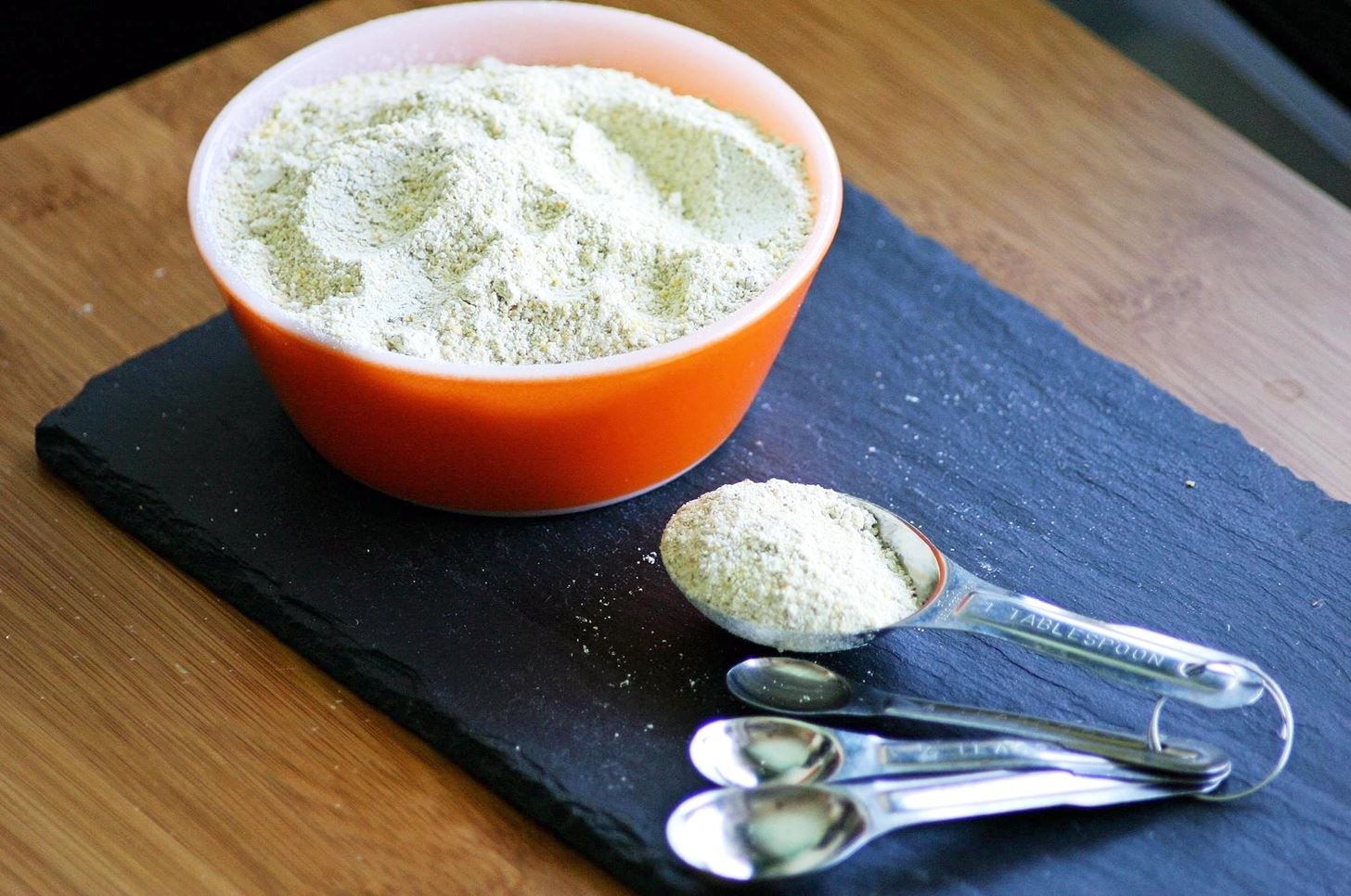
Step 3: Add Flavorings
Many people like plain protein powder, as they can add the flavor during the shake- or smoothie-making. But it can be nice to have flavored powder as well, just to make things more convenient later down the road. If you're one of these people, the world is your oyster: just add a few tablespoons of anything you'd like to your powder. My favorite: shredded coconut and chocolate, with just a touch of sugar and nutmeg.

If you're adding fine or powdered ingredients, such as cocoa powder, sugar, or any spices, you can simply mix them in with your protein powder. If you're adding larger ingredients, such as nuts, coconut, or freeze dried fruit, you'll want to throw it in with the mixture before the blending process.
Step 4: Enjoy
And just like that, you've got perfect homemade protein powder, all ready for a great post workout shake! Store it in an airtight container; it will stay on the shelf for a few months, or in the freezer for a few years.

A Quick Health Note
While homemade protein powder is generally healthier than store-bought varieties, some people are strongly opposed to eating raw grains and rice. If you are one of these people, try toasting all of your ingredients before using them (here's a good how-to). Furthermore, even though you're not cooking it, always wash your rice, barley, farro, quinoa, and other grains!
Store-Bought Can Suck It
Homemade food is the best, and here are some more recipes to try out:
Just updated your iPhone? You'll find new emoji, enhanced security, podcast transcripts, Apple Cash virtual numbers, and other useful features. There are even new additions hidden within Safari. Find out what's new and changed on your iPhone with the iOS 17.4 update.







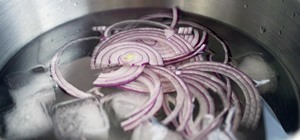

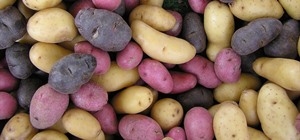

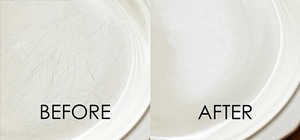


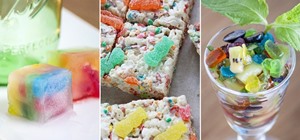
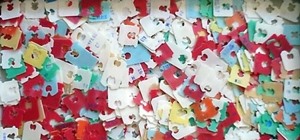
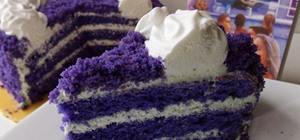




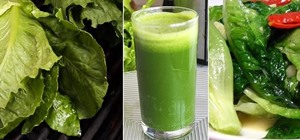
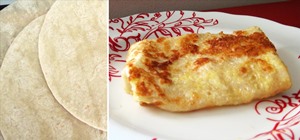
18 Comments
lentils, brown rice, oats, quinoa - these are all predominantly carbs. This is a recipe for healthy pancake powder.
I recently found out that I have EoE - Eosinophilic Esophagitis - and am allergic to 35 different foods. As a result, I have to supplement for breakfast (no wheat, rice, rye, corn or oat, egg, or milk). I have bought several different protein powders, and they were all HORRIBLE. I finally thought to myself, is it possible to make my own protein powder and have it taste better? And voila, I found this post. THANK YOU from the bottom of my heart. I recently bought millet and found it to be delicious. SO looking forward to my first protein powder - lentils, quinoa and farro flavored with dried coconut, vanilla and Truvia. Wish me luck! But I do think it will be DELICIOUS!!
I spent an hour at the grocery story buying Quinoa, Amaranth, Lentils, Coconut, Stevia and a coffee grinder. After toasting, grinding and mixing, I took 1/4 cup and mixed it with 8 oz flax milk, 2 packets of Stevia and 1 splash of vanilla. I then drank most of it. Then I took a spoon and ate the pile of unmixed grains. It tasted a thousand times better than the beef-only protein powder (which was the worst thing I have ever put in my mouth, EVER). All in all, a good tasting protein powder and now that I've got all my stuff, it'll last me a long, long time. I got a ton of protein powder out of 1 cup lentils, 1/2 cup quinoa, 1/2 cup amaranth and 1/4 cup coconut. And I probably only needed about 1 tablespoon of the protein powder instead of the 1/4 cup I used. Plus I have a LOT of the grains left over. Give it a try, I think you'll like it! :)
Laura I am so, so happy to hear this!!
This doesn't actually seem to contain that much protein, but rather a lot of carbs. Disappointing, as store bought protein powders are so nasty.
I hear ya Cat. But I can't deal with commercial protein at all. Not even Slim Fast anymore, so I'm eager to try this out because I'm not really interested in a protein embalmed smoothie but rather a more filling smoothie.
If it's just a little more protein then I'm satisfied with that as long as it doesn't impair the taste of the smoothie and do all sorts of crazy things to me, like making me nauseous for one. I'm doing a 100 day green smoothie fast and I think that a tbsp or two of a homemade protein concoction will work out for me.
You mentioned something about washing the grains, which I know people commonly do for cooking, i never did it but I know that others commonly do. But I can't imagine how that would work for making a protein powder? How would you dry those washed grains?
The importance of washing grains really depends on what grains you're talking about. For oats, they're best for use in this application if they're unwashed. For rice, quinoa, or farro, it's really important to wash them—some grains, such as quinoa, have a bitter dry coating that requires washing for better flavor. When I wash quinoa or farro, I dump the wet grains onto a kitchen towel and rub them dry before using. I hope this helps!
To add to what Kris said, I usually wash the hard grains and then lay them out on a baking sheet for a few hours until they air dry. Washing rice is a pretty important sanitary measure, and, like Kris said, washing quinoa really gets rid of the bitter exterior.
How do i make it not taste like ass?
Hi, when I select a protein powder I look at how much protein I get per scoop. I would love to make my own (cleaner and less expensive) but isn't there much more carbs than proteins in the blends suggested here?
My wife's protein powder recipe includes coconut flour and wheat germ. Flavored with cinnamon and nutmeg.
I just made the rice, quinoa and oats powder. My question is how much do you use for 8 oz? I looked at the article several times and don't see it. I usually use 1 cup, 8oz 2% milk and several ice cubes in commercial powder. I just cant hack the artificial or sugar "replacements" anymore. Thanks to anyone who answers the question. :)
Is that recipe just for one shake? How many scoops should I use for one of 8oz? Thanks for sharing
Why not spread your wet, washed grains on a sheet pan and dry/toast in a 250 oven? Toasting the grains prior to grinding was already mentioned in the article, so that seems like a viable solution. Just shake the pan a few times during drying.
What are the nutritional facts for the oats,quinoa, and brown rice recipe. The link for the comparison is not functioning, so I am hoping someone knows the amount of protein and other values per amount used.
I've finally found all the ingredients, planning to make packs and packs with a huge variety. The price of store bought protein powders are an insult especially if you live in a other country that aren't America. Just a tiny quick question, how do you turn a protein powder into a weight loss fuel or are they the same thing? Want to build muscle while I loose weight by exercising and the right powders. All and all I'm pretty excited when I finally found such an easy recipe for exactly what I needed. Didn't think it would be this easy. ?? one more question, how do I know how much flavoring each batch should have? Let's see if the answers would come as easily as it was to find this recipe. Thumbs up for the person who created this page, you saved me a lot of money. ????
Hi. Just a quick question: The recipe with green lentils, brown rice, and oats with recommended quantity contains how many calories?
Share Your Thoughts